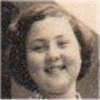 | Name: Amy Yau
Overview: Amy Yau`s mother was a stenographer; her father was a health inspector, and they both came from mixed race backgrounds. Amy was born in Singapore, just before it was invaded by the Japanese, and was saved by the presence in her household of her Japanese grand-mother and great-aunt. She came to England to train as a nurse in 1960 and married a few years later. Her husband originates from mainland China and opened the first Chinese restaurant in Malvern. She helped out in the restaurant while her children were growing up and then returned to nursing.
Hits=3 |
|
|  | Name: Patrick Grogan
Overview: Patrick Grogan was treated at King`s College Hospital by R.D. Lawrence (co-founder of the British Diabetes Association, now Diabetes UK) and he remembers Lawrence commenting on the amount of carbohydrate at a hospital Christmas party. He has always kept to a healthy diet, has had lots of exercise as a machine-tool fitter and maintenance worker, and has had no diabetic complications. He`s a member of NHS Concern and the West Midlands Pensioners Convention and says that taking an interest in improving society is what keeps him going.
Hits=3 |
|
| 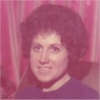 | Name: Shirley
Overview: Shirley left school at 16 and worked for the Inland Revenue until retirement. When she was diagnosed, her mother was very ashamed. Shirley looked after her parents until they died and then lived alone. She has had to cope alone with severe hypos, but says that living alone makes it easier to keep to a strict diet. She feels that her diet has made her healthier than she would have been if she hadn`t had diabetes. She has a low opinion of doctors, apart from a few consultants, but likes the group meetings held nowadays by specialist nurses.
Hits=3 |
|
| 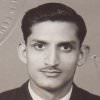 | Name: Ali Zafar
Overview: Ali Zafar qualified in India in 1967 and came to England in 1970. He began to specialise in diabetes when he worked as a registrar at East Birmingham hospital (now Heartlands) from 1972 to 1975. He became a GP in an inner-city practice in 1975, but continued to work at the hospital diabetic clinic, first as a clinical assistant and then as a hospital practitioner, until he retired in 2006. Both the hospital and his surgery were in areas with a high percentage of Asian people. He first produced an Asian diet sheet in the early 1970s.
Hits=2 |
|
|
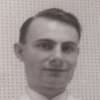 | Name: Alex Wright
Overview: Dr. Alex Wright was Senior Lecturer and Honorary Consultant at Birmingham from 1973 to 1997, mostly at the General Hospital and latterly at the University Hospital, Selly Oak. He is now Honorary Senior Lecturer and works part-time at Manor Hospital, Walsall and Heartlands Hospital, Birmingham. He has also seen private patients on Saturday mornings for over 25 years. He has published on many aspects of diabetes and was part of the policy advisory group for the UK Prospective Diabetes Study, a 20-year trial which showed that the life-threatening complications of type 2 diabetes can be significantly reduced by appropriate treatment.
Hits=1 |
|
| 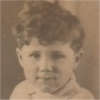 | Name: Allan Jones
Overview: Allan Jones` father was a miner with six children. They had little money but had to pay for insulin and equipment until the National Health Service was created in 1948. They couldn`t afford cotton wool and re-used needles until they were blunt. When Allan was 15 he got a job as a messenger on the railways but had to pass a medical before being promoted. He feared he would lose his job if his diabetes was discovered, so took with him a sample of his brother`s urine! He passed the medical and worked happily on the railways for 30 years.
Hits=1 |
|
|
 | Name: Julia
Overview: Julia was the first member of her family to go to university, and she taught in a primary school before specialising in teaching dance. Between her diagnosis in 1989 and the recording of this interview in 2004, she spent time in hospital for a variety of reasons, including the births of her three daughters. The biggest changes she noticed during these years were the increasing role of specialist nurses and also a shift to patient control: at first she was automatically put on a drip, whereas later the staff began to trust her to manage her own diabetes.
Hits=1 |
|
|  | Name: Jeanette
Overview: Jeanette left school at 15 and worked in one of the first supermarkets in Malvern, where she met her husband. They married when she was 17 and had two children. During her second pregnancy, she had high glucose levels, but it wasn`t until a year later that she was diagnosed with diabetes and admitted to hospital for 5 weeks. She continued to use a glass syringe until c.2002. She feels that diabetes has caused her few problems, but she had to give up work because of osteoarthritis at the age of 44.
Hits=1 |
|
|
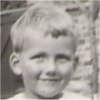 | Name: Francis Andrews
Overview: Dr. the Rev. Francis Andrews was diagnosed with diabetes on the day that war was declared in September 1939. He was the son of a doctor who`d worked as a medical officer in Flanders during the First World War. Francis also trained to be a doctor, and eventually became a consultant physician in rheumatology, having been advised not to specialise in diabetes. He married and has 6 children, 15 grandchildren and 1 great-grandchild, none of whom have diabetes. He took early retirement to train as a Catholic priest, and was ordained in 1994.
Hits=1 |
|
|  | Name: Harriet
Overview: Harriet was diagnosed when she was 12, and loved Great Ormond Street Hospital, where she was treated until she was 17. Her grammar school couldn`t cope with her diabetes, so she left at 15 to do O and A Levels elsewhere, and eventually gained a Diploma in Fine and Decorative Arts. She has worked for the Tate Gallery and for a company that bought art for corporations, and has also run her own business, and worked in college and university administration. Her daughter was diagnosed with diabetes at the age of 9.
There is also an interview with Harriet`s husband, Greg.
Hits=1 |
|
|
 | Name: John Browning
Overview: John Browning`s father was an army officer and John always assumed that he would make his own career in the forces. He was diagnosed with diabetes at the age of 28, not long after getting married, and was invalided out of the army. He became a Conservative party agent and then a teacher. He still weighs his food and attributes his good health to his strict regime. He thinks one of the main improvements in his care has been to see the same specialist at each visit, instead of a different person every time.
Hits=1 |
|
| 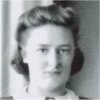 | Name: June
Overview: June`s husband, Charles, was diagnosed with diabetes at Barnstaple Hospital in 1935, when he was ten. After leaving hospital, he didn`t return for a check-up until 1957. He missed two years of school, as it was too far to walk and he had to look after his own injections, urine tests and diet, because his mother had seven other children. After June married Charles in 1946, his diabetes made little impact on their lives. He disliked blood testing and did urine tests until around 2004, when June did blood tests for him. June developed Type 2 diabetes twelve years ago.
Hits=1 |
|
|
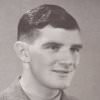 | Name: Michael Williams
Overview: Michael Williams worked in general medicine at Aberdeen Royal Infirmary until 1968, when he was given three months leave to study diabetes with John Butterfield at Guy`s Hospital in London and John Malins at Birmingham General Hospital. He returned to Aberdeen to work with John Stowers as a ‘Consultant in General Medicine with Special Interest in Metabolic Diseases` until 1983 and then consultant in charge of the Infirmary`s diabetic clinic until he retired in 1994 and was succeeded by Ken McHardy. He has published several papers about his fellow Aberdonian, the co-discoverer of insulin, J.J.R. Mcleod.
Hits=1 |
|
|
| Search returned 20 matches |